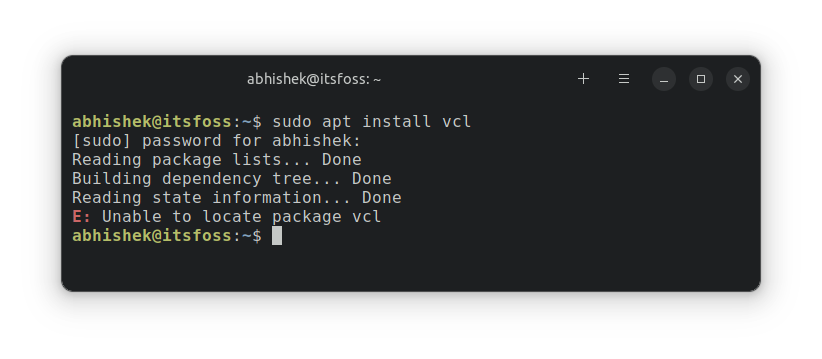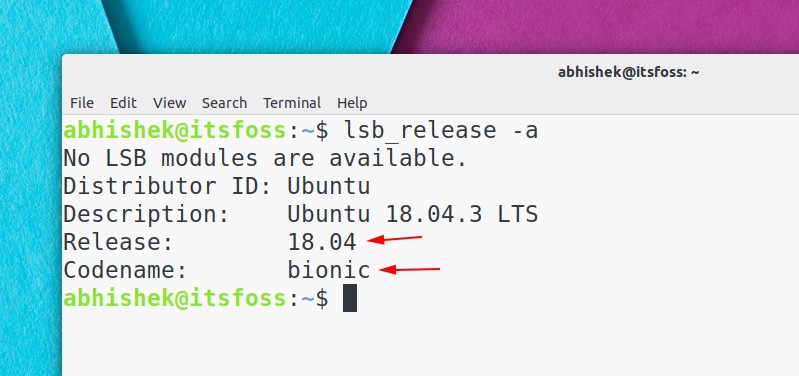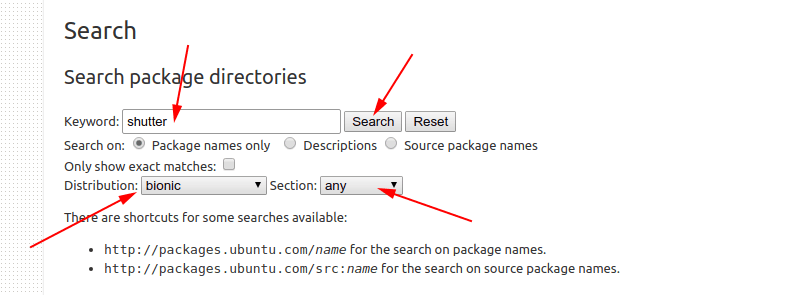
One of the many ways of installing software in Ubuntu is to use the apt-get or the apt command. You open a terminal and use the program name to install it like this:
sudo apt install package_nameSometimes, you may encounter an error while trying to install application in this manner. The error reads:
sudo apt-get install package_name
Reading package lists... Done
Building dependency tree
Reading state information... Done
E: Unable to locate package package_nameThe error is self explanatory. Your Linux system cannot find the package that you are trying to install. But why is it so? Why can it not find the package? Let’s see some of the actions you can take to fix this issue.
Fixing ‘Unable to locate package error’ on Ubuntu
Let’s see how to troubleshoot this issue one step at a time.
1. Check the package name (no, seriously)
This should be the first thing to check. Did you make a typo in the package name? I mean, if you are trying to install vlc and you typed vcl, it will surely fail.

Typos are common, so make sure you have not made any mistakes in typing the package's name.
Also, the commands in Linux are case-sensitive. So make sure that you are typing the correct package name. For example, the command name should be vlc, not Vlc or VLC.
Remember that the installable package name could be different than the popular software name. In Ubuntu, Docker package is docker.io because docker was an existing package. With Snap, VS Code package is named code, not vscode.
A practical example is installing zlib package on Ubuntu. The installable package name is zlib1g. And that's numeric 1, not the letter L in small cases.
2. Update the repository cache
If this is the first time you are using your system after installing, you should run the update command:
sudo apt updateThis command won’t update Ubuntu straightaway. I recommend to get through the concept of Ubuntu repositories. Basically, the ‘apt update’ command builds a local cache of available packages.
When you use the install command, apt package manager searches the cache to get the package and version information and then downloads it from its repositories over the network. If the package is not in this cache, your system won’t be able to install it.
When you have a freshly installed Ubuntu system, the cache is empty. This is why you should run the apt update command right after installing Ubuntu or any other distributions based on Ubuntu (like Linux Mint).
Even if it's not a fresh install, your apt cache might be outdated. It’s always a good idea to update it.
3. Check if the package is available for your Ubuntu version
Alright! You checked the name of the package and it is correct. You run the update command to rebuild the cache and yet you see the "unable to locate package" error.
The package may be really not available. But you are following the instructions mentioned on some website and everyone else seems to be able to install it like that. What could be the issue?
I can see two things here. Either the package is available in the Universe repository and your system hasn’t enabled it or the package is not available on your Ubuntu version altogether. Don’t get confused. I’ll explain it for you.
First step, check the Ubuntu version you are running. Open a terminal and use the following command:
lsb_release -aYou’ll get the Ubuntu version number and the codename in the output. The codename is what is important here:
abhishek@itsfoss:~$ lsb_release -a
No LSB modules are available.
Distributor ID: Ubuntu
Description: Ubuntu 18.04.3 LTS
Release: 18.04
Codename: bionic
As you can see here, I am using Ubuntu 18.04, whose codename is bionic. You may have something else but you get the gist of what you need to note here.
Once you have the version number and the codename, head over to the Ubuntu packages website:
Scroll down a bit on this page and go to the Search part. You’ll see a keyword field. Enter the package name (which your system cannot find) and then set the correct distribution codename. The section should be ‘any’. When you have set these three details, hit the search button.

This will show if the package is available for your Ubuntu version and if yes, which repository it belongs to. In my case, I searched for Shutter screenshot tool and this is what it showed me for Ubuntu 18.04 Bionic version:

In my case, the package name is an exact match. This means the package shutter is available for Ubuntu 18.04 Bionic but in the ‘Universe repository’. If you are wondering what the heck is Universe repository, please refer to the Ubuntu repository article I had mentioned earlier.
If the intended package is available for your Ubuntu version but in a repository like the universe or multiverse, you should enable these additional repositories:
sudo add-apt-repository universe multiverseYou must also update the cache so that your system is aware of the new packages available through these repositories:
sudo apt updateNow if you try to install the package, things should be fine.
4. Check if you are using an active Ubuntu release
Ubuntu has two major kinds of releases. The regular release is supported for nine months, while the long-term support releases are supported for five years.
In either case, if you are using an Ubuntu release that has reached its end of life, you won’t be able to install any new packages and see this "unable to locate package" error.
How do you know if your Ubuntu version is supported or not? Use this simple command to find it out:
hwe-support-status --verboseFor my supported version, it shows this output:
You are not running a system with a Hardware Enablement Stack. Your system is supported until April 2025.You may forget about Hardware Enablement Stack for the moment. The important information is whether the system is actively supported. In the above example, my system is supported till April 2025.
Nothing works; what now?
If the Ubuntu Packages website also shows that the package is unavailable for your specific version, you’ll have to find other ways to install the package.
Take Shutter, for example. It’s an excellent screenshot tool for Linux but it hasn’t been updated in years and thus Ubuntu has dropped it from Ubuntu 18.10 and newer versions. How to install it now? Thankfully, some third-party developer created a personal repository (PPA) and you can install it using that. [Please read this detailed guide to understand PPA in Ubuntu.] You can search for packages and their PPA on Ubuntu’s Launchpad website.
Remember that you shouldn’t add random (unofficial) PPAs to your repositories list. I advise sticking with what your distribution provides.
If there are no PPAs, check the project's official website and see if they provide some alternative ways of installing the application. Some projects provide DEB files or AppImage files. Some projects have switched to Snap packages.
In other words, check the project's official website and check if they have changed their installation method.
If nothing works, perhaps the project itself is discontinued and if that’s the case, you should look for an alternative application.
In the end…
If you are new to Ubuntu or Linux, things could be overwhelming. This is why I am covering some basic topics like this so that you better understand how things work in your system.
I hope this tutorial helps you handle the package error in Ubuntu. If you have questions or suggestions, please feel free to ask in the comment section.

It's FOSS turns 13! 13 years of helping people use Linux ❤️
And we need your help to go on for 13 more years. Support us with a Plus membership and enjoy an ad-free reading experience and get a Linux eBook for free.
To celebrate 13 years of It's FOSS, we have a lifetime membership option with reduced pricing of just $76. This is valid until 25th June only.
If you ever wanted to appreciate our work with Plus membership but didn't like the recurring subscription, this is your chance 😃

